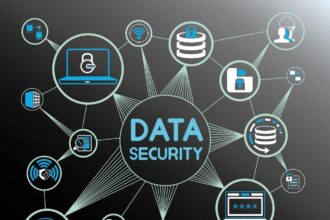Security analysis is a method used in cybersecurity to help boost security protocols for data protection. Companies can’t know the kinds of threats that are going to happen. This is where security analysis tools come into play.
They can be used to analyze security threats before they’ve been given the opportunity to create big problems for a business.
After reading through this post, you’ll have a better idea of how security analytics can benefit your business.
Why Do You Need Security Analytics?
Security analytics is a method that companies can use to keep themselves one step ahead of vulnerabilities. Several elements have contributed to the growth of security analytics.
One of these factors includes the conversion between protecting data and detecting it. Cybercriminals have a wide variety of methods to hack into data and it can provide you with an advantage.
This is because they create events that can be tracked both in real-time and historically. As a result, companies can look over previous security threats and come up with ways to counteract attacks of a similar nature.
There are also security analytics tools that you can use to track repeating threats and provide you with alerts when vulnerabilities are being detected. This helps you work faster to tighten up security in weak areas.
In addition to this, security analytics tools enable you to provide stakeholders and people in senior management positions with results. There’s more pressure being placed on IT teams to provide results quicker, which often leads to more mistakes being made.
However, security analytics tools can give you data in real-time that are also more accurate. This enables IT teams to quickly and accurately detect security threats and remediate them quicker.
One of the other most notable advantages of using security analytics tools is that it allows you to view and analyze copious amounts of data quickly and at any time you request. The types of data you can analyze include network traffic, cloud traffic, applications, compliance proof, and more.
Being able to analyze so much data in one go makes it easier for companies to start matching up the security threat alerts to security breaches. As a result, teams can work faster and more efficiently to detect the source of the vulnerability and fix it.
Not to mention, security analytics tools help organizations when it comes to compliance with regulations that are set out by the government.
Organizations can use security analytics for a range of reasons that include detecting insider vulnerabilities, data exfiltration, user behavior, and potentially compromised accounts.
Big Data & Security Analytics
The data within a company can be compiled across a range of assets. Data is only going to get bigger which provides hackers with more opportunities to carry out attacks. This means that organizations must ensure that they’ve got security analytics in place to better understand the potential risks.
Big data analytics involves models that consist of data science and statistics that help companies find vulnerabilities. These threats can be found in real-time which gives you the acne to carry out threat analysis.
Security alerts can be created to automatically notify you of any security anomalies so that teams can respond faster. Big data analytics also allow organizations to check for threats that are coming from the inside.
If there are any suspicious behaviors from user accounts within the company, there are systems that can notify you for further monitoring. When suspicious behavior is detected, security analytics tools can analyze the data to predict the types of threats that could happen.
This can help companies discover whether the suspicious behavior leads to a cyberattack which would help confirm insider threats. Timelines can also be created that allow companies to get a better picture of the end-to-end damage that has been caused.
Machine learning includes using computers and data sets to discover patterns. When it comes to security analytics, you can implement machine learning to find patterns that are unknown and known with more precision.
The combination of machine learning and security analytics lets you analyze activities that include malware that may have slipped past your anti-virus program. It can also produce analytics of normal activity so that you can get a clearer understanding of when a security anomaly arises.
Furthermore, you can identify exploited vulnerabilities and patterns by using data that has been compiled from past events.
Streaming data processing allows companies to carry out threat analysis in real-time. As soon as data is available, you’re able to analyze it quickly to discover potential vulnerabilities. This helps companies find the threats at an earlier stage before they’re given the chance to cause more damage.
One of the benefits of streaming data is that it includes data from external databases which allows organizations to have a wide range of data to help cover all bases.
End-to-End Security
Security analysis tools use AI technology to provide companies with data that can be used in an actionable manner. Data has to be taken from a wide range of sources with only key pieces of information being needed.
End-to-end encryption security can then provide you with potential security threats based on the current state of your network. These potential threats are then used to create risk assessments so that IT teams can prioritize the most dangerous threats.
This type of security can then take things a step further by providing you with solutions to possible threats that could happen in the future.
Conclusion
Security analytics can help your company detect and respond to threats faster and more accurately. With big data becoming more prominent across organizations, implementing security analytics is the most efficient way to keep track of potential threats.
Security teams are given a better chance to predict cyberattacks and employ the best security measures to prevent data from being stolen.
Hopefully, the details found throughout this post have helped you gain a better understanding of security analytics and how it could benefit your company’s security.











